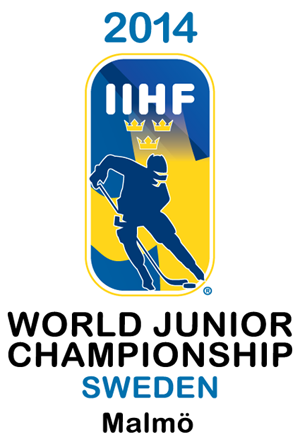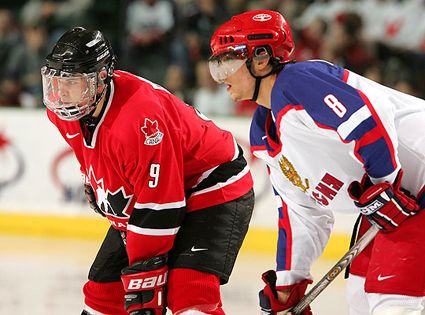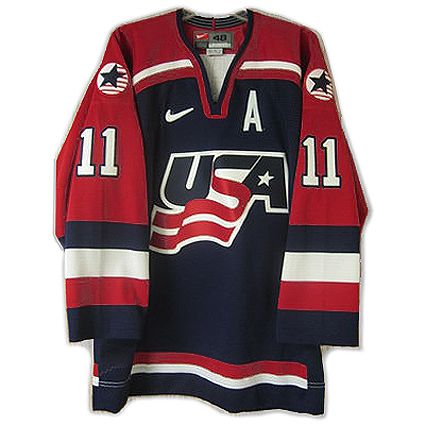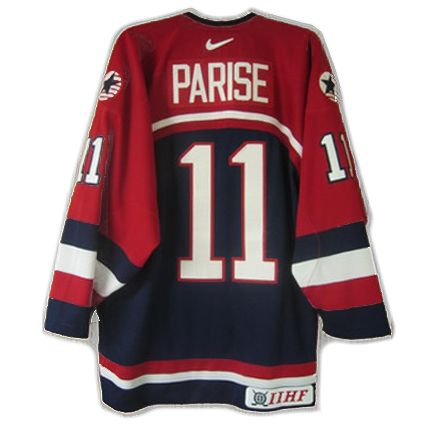The World Juniors have become a much anticipated annual event, particularly in Canada, and anybody who's anybody has played in the tournament on their road to the NHL, dating back to
making it a must-see event each year.
Future NHL stars Sidney Crosby and Alexander Ovechkin
meeting in the 2005 World Juniors
The ten teams in this year's edition are divided into two groups of five and each team will play the other four teams in it's group once each in the Preliminary Round, with the top four advancing to the Playoff Round. With so few games determining each team's fate, no one can afford to take a night off as each and every game is critical to each team's chances.
For the unfortunate two clubs who finish in the bottom two of their groups, they will be paired in the best-of-three Relegation Round with the loser demoted to the Division I Group A level for 2015 and will need to earn their way back up to the Top Division, which can only be achieved by winning a championship in Division I Group A. This relegation format ensures that nearly every game matters in the World Juniors and the games that determine which clubs stay up can be very exciting affairs when two countries are battling with survival on the line. We strongly encourage those in attendance take in the Relegation Round, as spirited games in the much more homey secondary arena can provide some terrific competition in a small town or collegiate atmosphere that differs greatly from the environment more polished main rink and is a recommended part of the World Junior Tournament experience.
Once in the Playoff Round, the four advancing teams will be paired in the quarterfinal games which will take place on January 2nd, with the winners advancing to the semifinals on January 4th. The semifinal losers will meet for the bronze medal on January 5th with the winners meeting for the gold medal later that evening.
For 2014, Group A consists of the United States, Canada, the Czech Republic, Germany and Slovakia.
Group B sees Russia, Sweden, Finland, Switzerland and underdogs Norway.
In Group A, the Americans and Canadians are favored to advance along with the Czech Republic while Germany and Slovakia will be battling it out for the final playoff spot, with all teams looking to avoid giving away points, or worse, being upset by either Slovakia or Germany.
For the Slovaks and Germans to avoid the Relegation Round the key will clearly be to defeat the other during their key meeting on December 27th and then steal a point whenever they can by getting to overtime against the other three teams, if not pulling off an outright upset along the way.
Group B is more clear cut, as Russia, Sweden, Finland and Switzerland are expected to advance with as many points as possible for the most favorable semifinal matchup.
Poor Norway will be in for a rough go and will most certainly be hoping one of the four teams ranked above them will be having a down year and that they can manage to take enough points in the Preliminary Round to avoid the relegation fight entirely, or their tournament will come down to the best-of-three battle with the Group A relegation representative.
Canada put together a dominant run of five consecutive titles from 2005 to 2009, but their program is a victim of it's own success in breeding top quality players, as tournament eligible players often cannot take part due to having found gainful employment in the NHL.
Still, 19 of the 22 Canadian players are already have been draft picks in the NHL. with Scott Laughton, Matt Pelech and Matt Dumba already having NHL experience. Despite the distance to Sweden, the Canadians will feel right at home playing in front of many red-clad supporters who annually make the trip to the World Juniors and waving the Maple Leaf each time they take to the ice.
The host United States has three players returning from the team that won gold last year. Captain Riley Barber, goaltender Jon Gilles and winger Ryan Hartman all are back in an attempt to capture a second consecutive gold, while 21 of the 23 members of the roster are NHL draft picks.
The tournament begins with four games today, with Germany taking on Canada and Norway facing Russia in the early games followed by the United States beginning their schedule against the Czech Republic while Switzerland faces off against the host Swedes in the evening games.
Fans in attendance in Malmö will have the luxury of being able to attend any game they choose since the two arenas are located a mere 2 miles apart, unlike some other years when the two host arenas have been several hours drive between them. The Malmö Arena is the main venue, with a capacity of 15,500 with the Malmö Isstadion as the secondary rink, with a capacity of 5,140.
Malmö Arena
With the large number of games compressed into such a small schedule, the second arena can often find itself hosting some terrific matchups. This year, with Group B being held entirely in the larger Malmö Arena due to the presence of host Sweden, the Isstadion will host such matchups as the United States vs. the Czech Republic today, Canada vs. the Czechs on the 28th, and the highlight game of the group, the United States facing rival Canada in the group's final game on New Year's Eve. We highly recommend taking in one game at the secondary arena during the Preliminary Round each year when possible.
In the United States, the
NHL Network will be airing all of the Preliminary Round games for Group A, which therefore includes all games for both the United States and Canada, as well as the three remaining Group A games which do not involve the North American rivals.
Once the Playoff Round begins, all eight playoff games on January 2nd, 4th and 5th will be aired through the gold medal final.
For viewers in Canada,
TSN will be airing all of the Group A games as well as eight out of the ten Group B games prior to their coverage of the eight Playoff Round contests through the gold medal game on January 5th.
In a nice bit of traditional scheduling, the tournament always takes off New Year's Day between the Preliminary Round and the commencement of the playoffs, avoiding any conflict with the now annual NHL Winter Classic.
Parise led the US with five goals and 11 points on his way to being named the Most Valuable Player of the tournament.
This style of jersey was first used by the United States at the 2002 Olympics in Salt Lake City and remained in use through the 2005 World Junior Tournament.
Here are extended highlights from the 2004 World Juniors when the United States captured the gold medal thanks to an errant clearing attempt by Canadian goaltender Marc-Andre Fleury.
















No comments:
Post a Comment
We welcome and encourage genuine comments and corrections from our readers. Please no spam. It will not be approved and never seen.